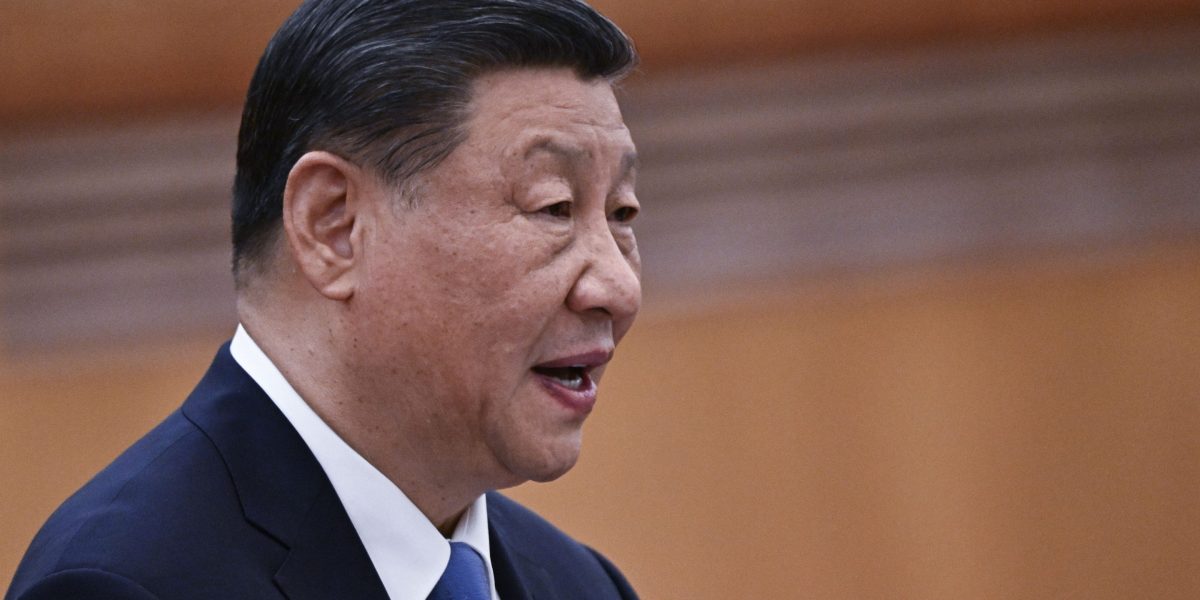In recent weeks, Beijing has announced a flood of stimulus measures—or intentions for such measures—as the alarms grow louder on China’s economy.
The central bank has cut various lending rates, lowered cash reserve requirements at banks, and offered more liquidity for the stock market. Officials have also signaled relief on local government debts and the ailing property market.
But the government has yet to unveil solid plans for a big fiscal bazooka that will put more money in consumers’ pockets to revive demand. On Saturday, a much-anticipated briefing by the finance ministry further disappointed economists by only teasing that there’s substantial room for more government spending and then suggesting more steps could be announced later.
After China’s property market bubble burst a few years ago, consumers became reluctant to spend and signs of deflation began creeping in. But due in part to its disdain for “welfarism,” China has been reluctant to offer substantial direct aid for consumers.
Rather than unleash massive fiscal transfers like the U.S. did during the pandemic in the form of stimulus checks, China has instead relied on a decades-old strategy of favoring industrial production over all else, spurring a flood of production domestically and exports abroad.
Without more help on the demand side, China’s rate cuts could actually make the economy even worse by exacerbating the deflation problem. A big reason why is that China’s growth still relies more on production and investment than consumption, unlike in the U.S.
So while rate cuts from the Federal Reserve can ignite more borrowing by Americans to buy cars or other big-ticket items, that’s not the case in China.
According to Peking University finance professor Michael Pettis, China’s financial system is aimed mainly toward the supply side of the economy. In particular, credit is directed through businesses, state-owned enterprises, local governments, and the central government to infrastructure, property, and manufacturing, he wrote in an Aug. 21 note for the Carnegie Endowment for International Peace, where he is also a nonresident senior fellow.
The result of the additional money supply is an increase in output from companies that are then forced to compete more intensely on price.
“That’s probably the reason why the combination of a highly inflationary global environment and China’s rapid credit and monetary growth has been associated in China with deflation—not inflation,” Pettis explained.
In an Aug. 7 interview on CNBC, he also touched on China’s demand problem, saying households have seen their incomes grow slowly while economic uncertainty has made them reluctant to spend.
On the supply side, Chinese manufacturers are incredibly competitive, due in large part to weak household income, Pettis added.
Zongyuan Zoe Liu, a China scholar at the Council on Foreign Relations, also warned on industrial overcapacity in Foreign Affairs magazine recently.
“Simply put, in many crucial economic sectors, China is producing far more output than it, or foreign markets, can sustainably absorb,” she said. “As a result, the Chinese economy runs the risk of getting caught in a doom loop of falling prices, insolvency, factory closures, and, ultimately, job losses.”
When profits shrink, companies boost production higher and drop prices lower to generate enough cash to service their debt, Liu explained, adding that government-designated priority sectors also sell products below cost to meet political goals.
This dynamic has been destabilizing the global market with a flood of cheap Chinese exports creating a sharp backlash in the form of stiff tariffs. The domestic market is also marked by overproduction and cutthroat price competition that risks sending the economy into deflation, Liu warned.
“Analogously, although China’s vibrant e-commerce sector might suggest a plethora of consumer choices, in reality, major platforms such as Alibaba, Pinduoduo, and Shein compete fiercely to sell the same commoditized products,” she said.


